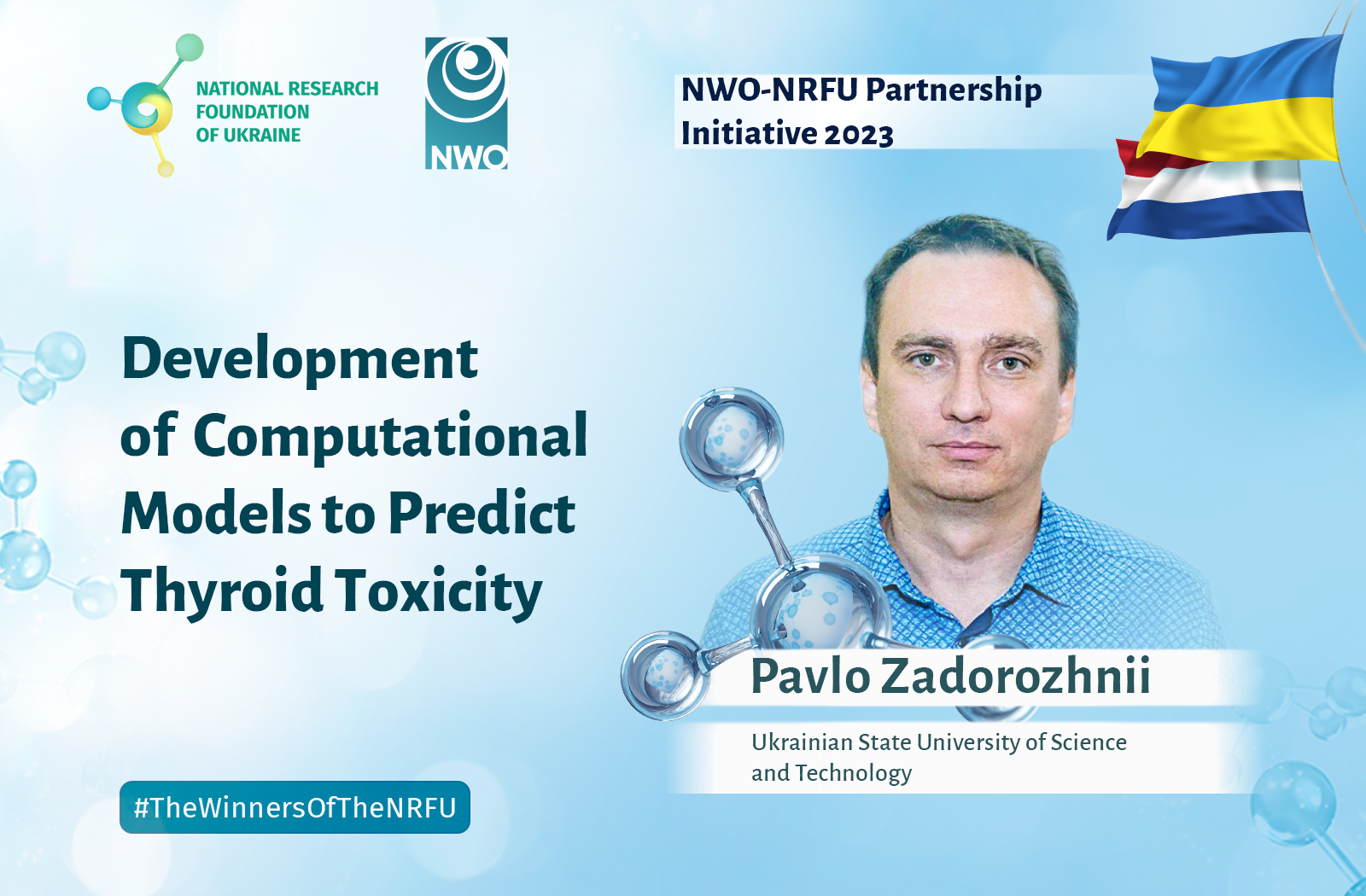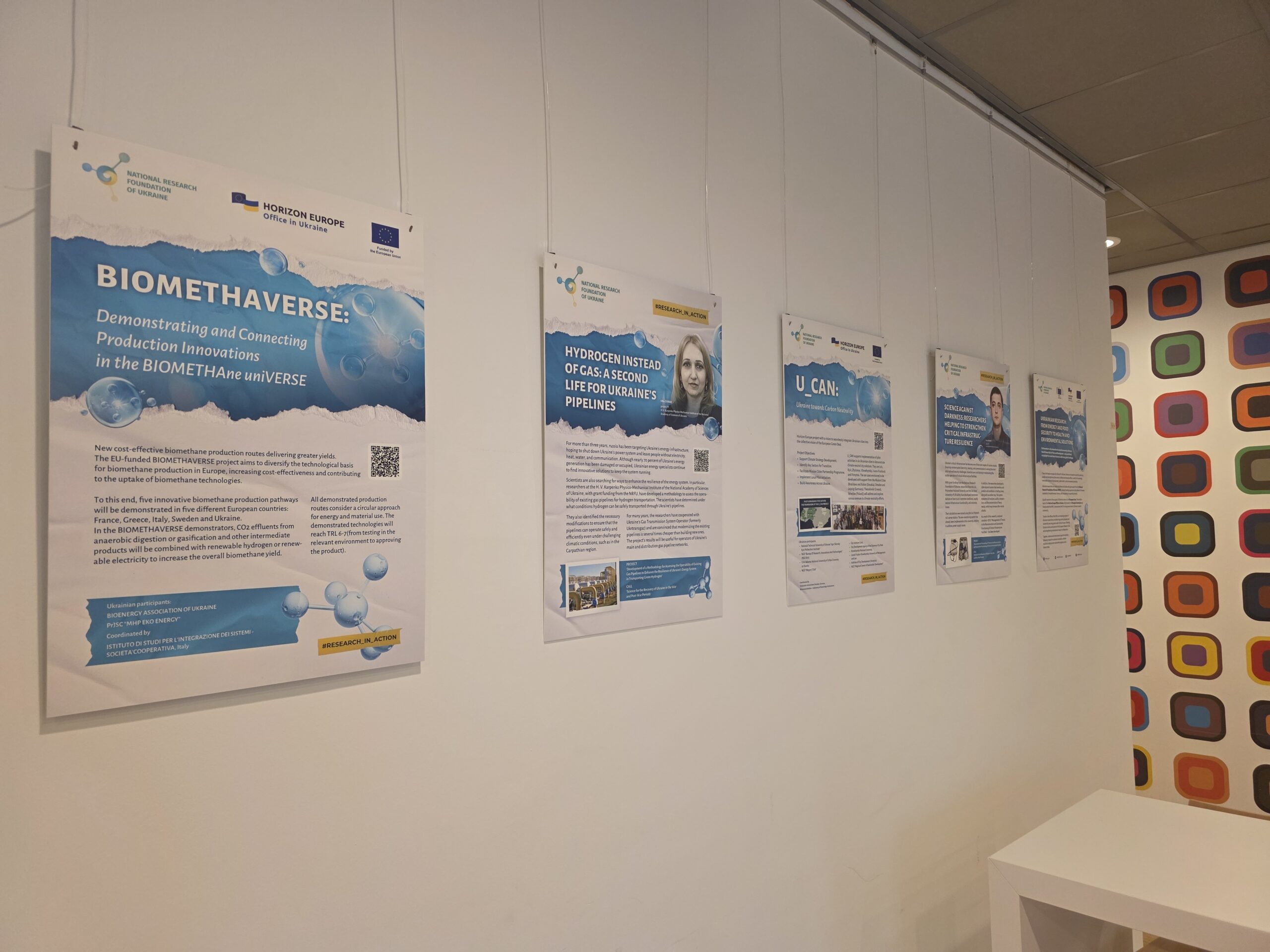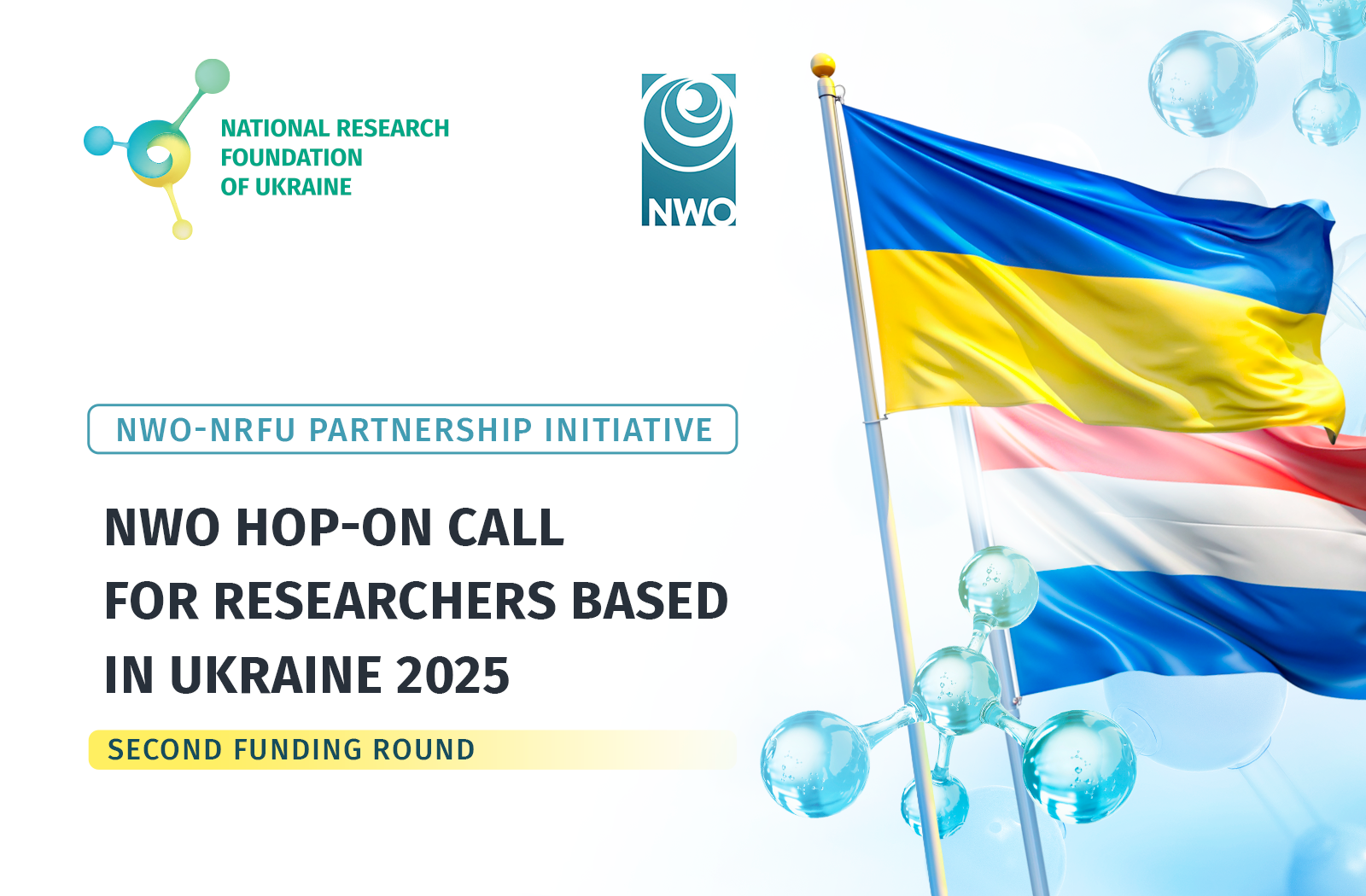The issue of safe testing of chemicals and drugs is becoming increasingly important. Traditional methods of research on laboratory animals not only raise ethical objections but also do not guarantee a reliable prediction of the effects of drugs and various compounds on the human body.
A team from the Netherlands is currently working on solving the issue of ethical and safe testing by developing a virtual human platform (VHP4Safety), an innovative, animal-free tool for safety testing. In early 2024, as part of the partnership initiative between the Dutch Research Council (NWO) and the National Research Foundation of Ukraine (NRFU), Pavlo Zadorozhnii, Associate Professor of the Department of Pharmacy, Chemistry, and Technology at the Ukrainian State University of Science and Technology, joined the team. The researcher is implementing a project entitled “Development of Computational Models to Predict Thyroid Toxicity”.
What is this platform and what is the idea of the Ukrainian researcher’s project?
As Pavlo Zadorozhnii explained, the virtual human platform is designed for computer testing and predicting toxic effects of various chemical agents (medicines, pesticides, etc.) on the human body. The researcher from Dnipro decided to focus on developing QSAR models (i.e., models that establish a link between the chemical structure of a substance and its biological activity and other properties) to predict the toxicity of chemical compounds on thyroid gland function.
“The idea arose in response to a global demand to reduce animal testing and speed up chemical safety assessments,” told the PI. “For me, this is an opportunity to apply my skills in bio- and chemoinformatics and computer-based drug modeling to work on addressing challenges in regulatory toxicology”.
The researcher decided to focus specifically on thyroid function, as this organ regulates critically important processes in the body. Thyroid dysfunction can have serious consequences, such as developmental and metabolic disorders. Despite this, there is little information about the thyrotoxicity of chemical compounds.
Pavlo Zadorozhnii is convinced that this issue can only be addressed (or progress can only be made toward its solution) through innovative, modern approaches to risk assessment, primarily QSAR modeling using machine learning methods.
“My goal is to develop a tool that would help the research community make more informed decisions while maintaining ethical principles in research”, emphasized the Professor.
The team which the Ukrainian researcher has joined is working on creating a computer-based model that helps predict whether a particular chemical can damage the thyroid gland. Instead of testing substances on animals, researchers are training the computer to identify hazardous properties based on already known data.
To make the result is effective, researchers have collected a large amount of information (a data set) about chemical compounds, their structure, and their effects on the body. To find certain patterns, researchers use machine learning methods (artificial intelligence (AI)). “After that, the model can predict the toxicity of new substances that have not yet been tested”, continued the PI. “We want such models to help protect human health in the future, and for animal testing to become a thing of the past”.
Participation in the call for proposals required finding partners in the Netherlands. A workshop held by the NRFU and NWO helped to find them. It was during the workshop that the researcher met Dr. Elena Domínguez-Romero from Maastricht University who told him about the VHP4Safety project and invited him to join the group. Pavlo Zadorozhnii now works remotely as part of Professor Gerard J.P. van Westen’s team at Leiden University.
“I am fortunate to work with a highly professional and open-minded team”, the researcher shares. “These are researchers who have in-depth knowledge of chemistry, toxicology, physiology, and bioinformatics, and they skillfully combine this knowledge with machine learning methods. I am particularly impressed by the culture of collaboration: they are always ready to listen, discuss, and support new ideas”.
As he says, the team brings together people with different research backgrounds, and that is what makes the work interesting and effective. “We don’t just share knowledge, we also learn from each other”, the Professor continued. “This collaboration means a lot to me, not only as a researcher but also as a person. It helps me go beyond my local experience, learn new things, and look at research from an international perspective. This collaboration is inspiring, gives me faith in shared values, and shows that research truly has no borders”.
Professor Pavlo Zadorozhnii advises his colleagues from Ukraine not to be afraid to take the first step toward cooperation with international partners. Very often, it begins with a simple letter or question during a research conference. “It is important to clearly understand what you can offer your partner”, emphasises the researcher. “This could be unique data, a new approach to addressing an issue, and so on”.
It is also important to look for opportunities within joint grants and research platforms, to participate in summer schools, workshops, and webinars where it is easy to find people with similar interests.
“Genuine interest in another culture and respect for a common cause create a true partnership”, the PI concluded. “Successful research cooperation is not only about publications, but also about trust, mutual support and a shared vision of the goal”.
Interviewed by Svitlana GALATA






